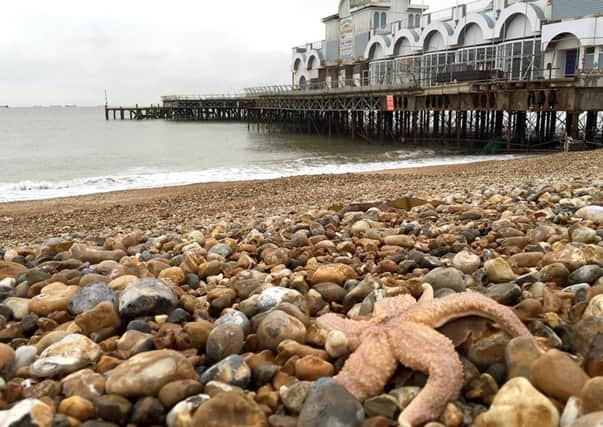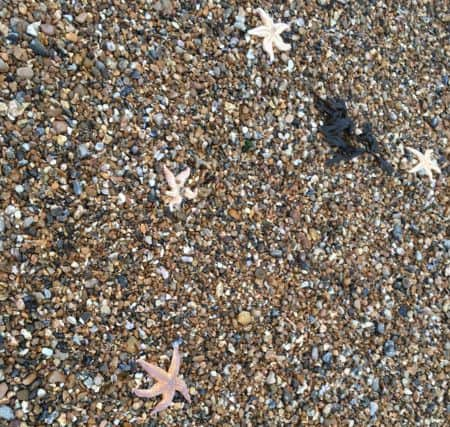Thousands of starfish washed up on Southsea beach


Walkers, fishermen and beachcombers have spotted scores of the creatures along the beach, with recent stormy weather the most likely cause.
Peter Whitelock, 62, goes beachcombing along Southsea beach regularly.
Advertisement
Hide AdAdvertisement
Hide AdHe said he had never seen so many starfish along the beach before.
Mr Whitelock said: ‘There are thousands of them. I’ve never seen so many. It’s must be because of the storm on Wednesday.
‘That brought them all in. I suppose it will make the fishmen happy because they usually eat all the oysters and clams.’
Rachel Hammerton, 39, from Southsea, regularly walks her dog along the beach.
She said she was also surprised by the starfish.


Advertisement
Hide AdAdvertisement
Hide AdMs Hammerton said: ‘It’s happened before this winter, I think this must be the second or third wave. In February half term there were lots as well.
‘But I don’t think it’s happened before in previous years. When you go down to the shore there are loads of them.’
Hannah Butt from Blue Reef Aquarium in Southsea said mass strandings of sea life were not uncommon in winter.
Ms Butt said: ‘It’s always sad to see large numbers of marine creatures stranding at the same time. Mass strandings of starfish, jellyfish and other marine creatures are not uncommon, particularly during the winter months.’


Advertisement
Hide AdAdvertisement
Hide AdMs Butt said possible causes included storms, breeding and pollution.
She said: ‘The most popular theory is they strand following storms further out at sea or strong onshore currents. Starfish feed on mussels and other molluscs and tend to live in relatively shallow water. Huge numbers of them can congregate on a single bed of mussels and – if conditions are right – will be dislodged by rough seas.
‘Some types of starfish also move inshore to breed and this is another possible cause, although this tends to happen during the spring or early summer months.
‘Other potential factors are they have been disturbed by dredging or affected by pollution, however the general consensus would seem to associate these types of strandings at this time of the year with strong onshore winds and stormy weather.’